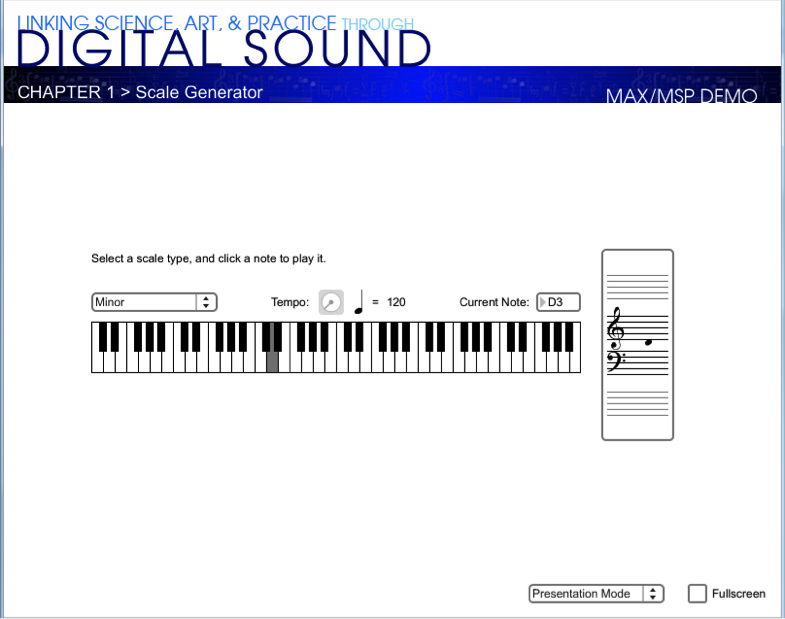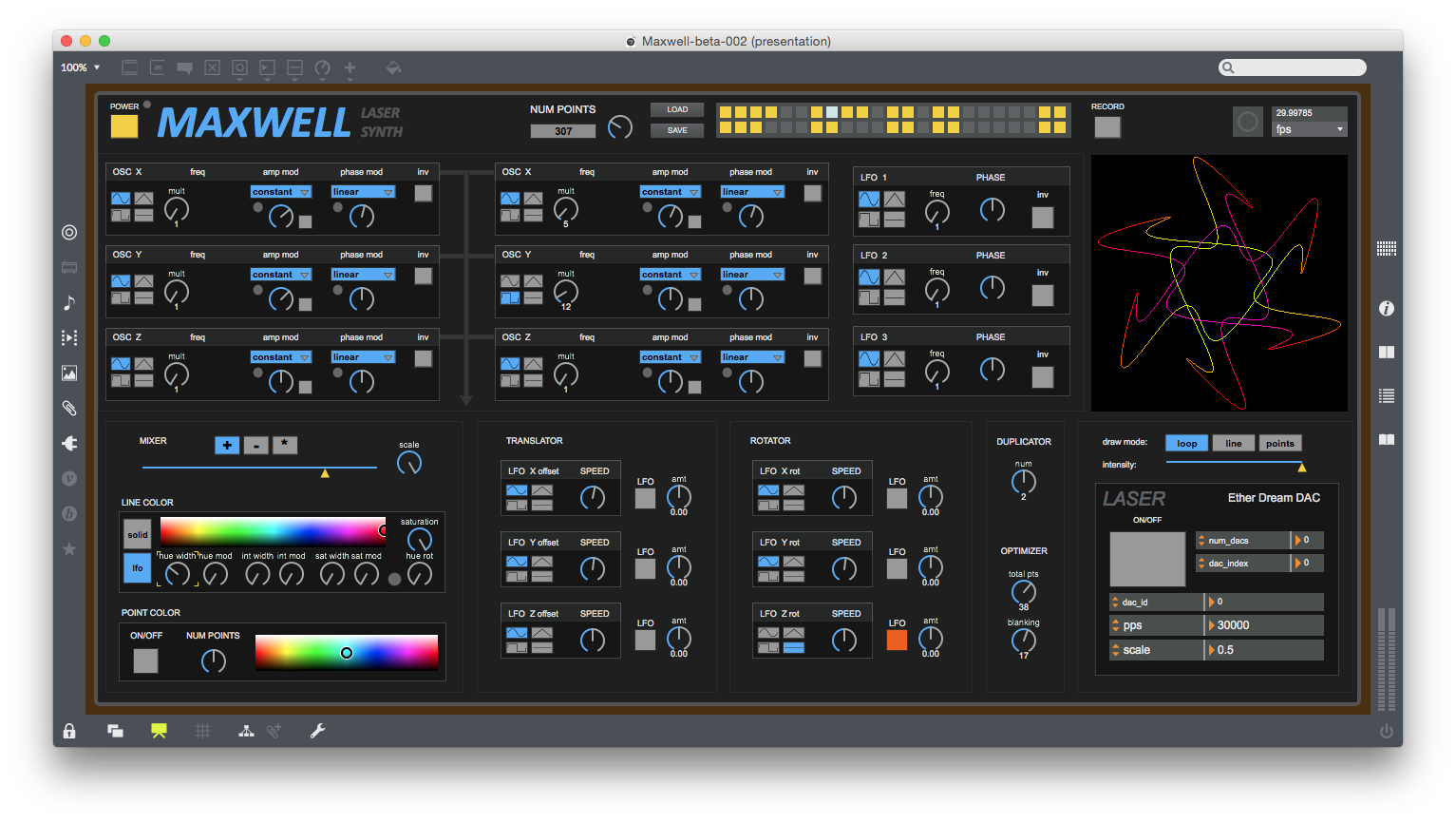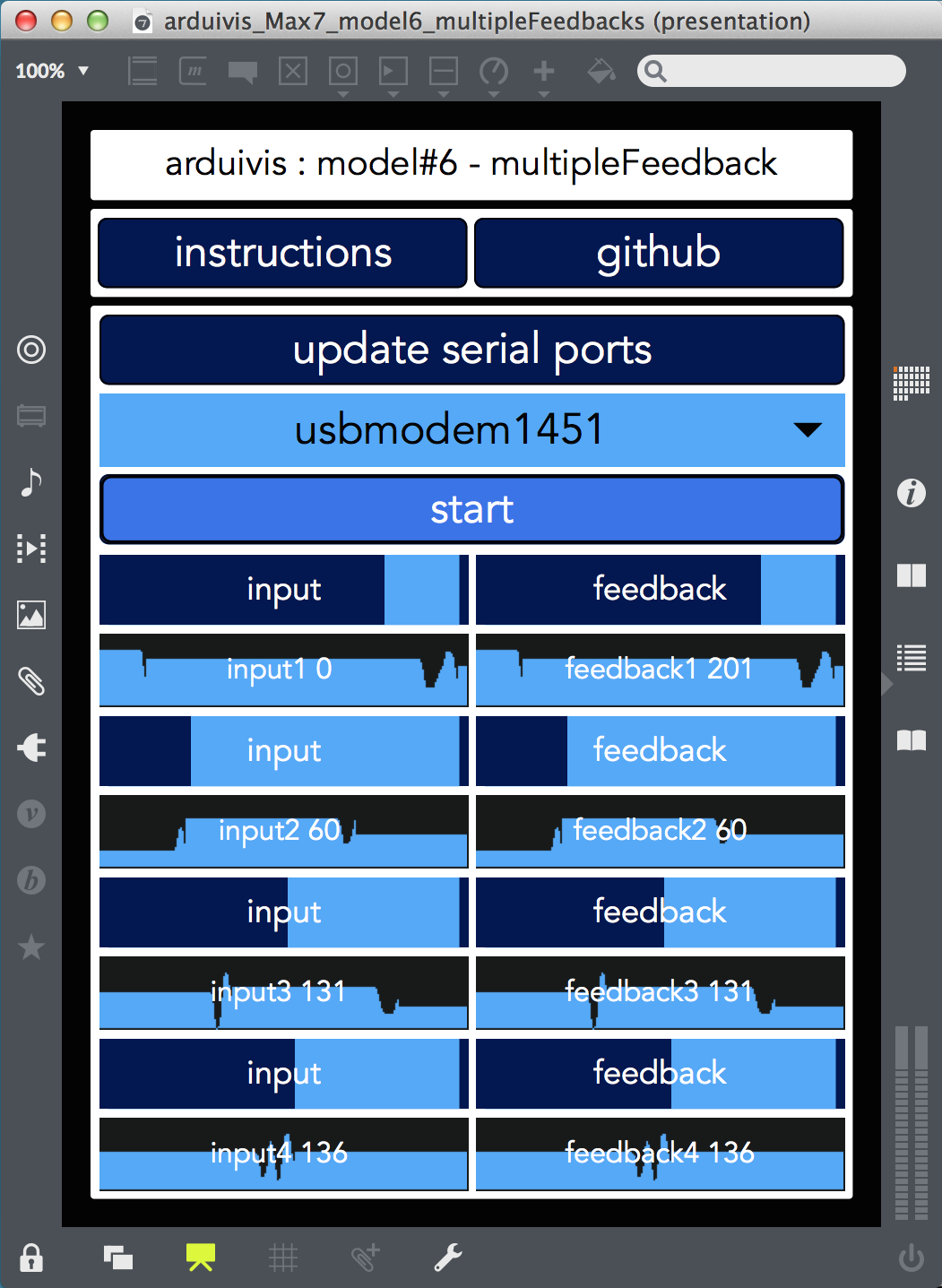


- Presentation mode max msp how to#
- Presentation mode max msp software#
- Presentation mode max msp download#

We all know user interfaces in TouchDesigner are hard.

Presentation mode max msp how to#
Learn how to use list comprehensions in TouchDesigner.Understand functions and classes in Python.TouchDesigner 099 project files and examples.From the conceptual to the concrete, by the end of the workshop you will have both worked with abstract concepts in the textport and created a functioning tool for saving presets. From using storage to writing your own extensions we’ll work through the several concepts that will help you better leverage Python in TouchDesigner for installations and events. Once you do that, plug in your Kinect and you’re ready to get programming!īuilding off of previous Python workshops, this class aims to demystify a few of the elements often used when doing advanced Python development work in TouchDesigner.
Presentation mode max msp download#
You’ll want to look up CNMAT Externals, a very sturdy and easy-to-use OSC library, and download it. To remedy this, while inside the Max application, go to the File dropdown menu and click on Package Manager. In Max, however, OSC is a bit more difficult to parse. OSC implementation in TouchDesigner is robust and intuitive: all you’ll need for this project is a single OSC Out CHOP. When working on your own local computer, you’ll only need to specify the port number to send and receive messages through since the server is your local system!
Presentation mode max msp software#
OSC, which stands for Open Sound Control, is a means through which a software can communicate with another independent software through a message system (a lot like MIDI). To properly get numbers out of TouchDesigner and into Max, you’ll have to do a bit of fiddling with OSC. The perfect idea hit me: a TouchDesigner and Max theremin! With a Kinect, some Max programming, a bit of TouchDesigner magic and a sprinkle of OSC, a Kinect theremin is a fun and easy project anyone can do in half an hour’s time! A Question to OSC… Exploring its fantastically in-depth implementation in TouchDesigner connected a few audio-nerd dots and left me wondering what it would take to get a Kinect to turn into an instrument. With that being said, I just recently dug my Kinect 2 out of a pile of old tech left untouched since 2013. Just like TouchDesigner, Max excels in quick implementation of complex concepts with a simple node-based visual system that places a focus on interactivity. TouchDesigner pairs nicely with Max/MSP, Cycling ‘74’s premiere visual programming platform for experimental music and audio, creating an unstoppable tag team of industry standard-setting visuals and audio. If you’ve spent a lot of time reading through the blog, you know firsthand that TouchDesigner is an immensely powerful tool with an endless scope of possible applications.


 0 kommentar(er)
0 kommentar(er)
